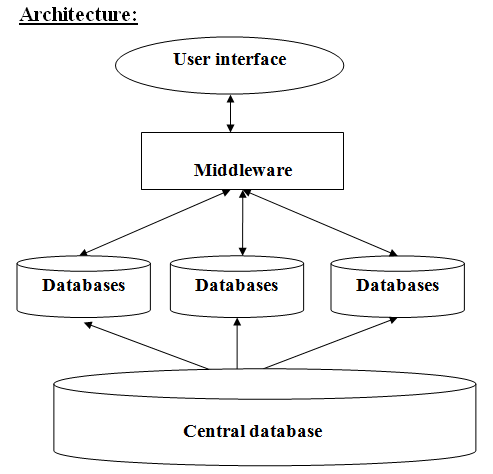Introduction:
The Automation of Department Library project is aimed at developing an Automated System for the Department library. Department library as the name itself indicates that the library system within a department.
Existing system:
Here faculty will request the book, then the administrator will search for it and if the book is available it will be issued to them.
Collecting books from central library:
Books, journals and other are provided to each and every department. After receiving the books the administrator will send an acknowledge to the library.
Updation of files :
All the updations regarding book issues and returns are done manually.
These files are used for further references.
Demerits of existing system:
- More manual work as the number of books increases.
- More time consuming for searching and updating the files.
- Consumes large volume of paper work and time.
Proposed system
In the proposed system the administrator will do all the updations like issues, returns and any other operations automatically, which reduces the time consumption and increases the efficiency of the system.
Requirement analysis:
Functional requirements
This section describes the functional requirements of the system for those requirements which are expressed in the natural language style.
Administrator will login to the system, and mention the required book details so a list will be generated automatically and he checks the status of the book, he can update, verify the faculty registration details etc.,
Architecture:
- The architecture has central database, which provide the base for the system.
- In the next layer we have a separate database for each department.
- Then the middleware which connects user interface to the requested data in database.
- User interface is top most layers through which the end-user interacts.
Scheduling:
Scheduling is an activity that distributes estimated effort across the project planned duration by allocating the effort to specific software engineering task.
The table above shows the schedule that we incorporate into our project to make the project meet all its requirements in time.
Risk management:
“Risk is the potential future harm that may arise from some present action”. Risk Management is a process that is used to minimize or eradicate risk before it can harm the productivity of a software project. With only 28% of software projects finishing on time and on budget, risk and the management of risk play an important role in software development.
Assessing Overall Project Risk
The following table shows some question and answers regarding the analysis of risk.
| Question | Answer |
| 1. Are requirements fully understood by project team? | |
| 2. Do end users have realistic expectations? | |
| 3. Are requirements stable? | |
| 4. Is number of people on the project team adequate to the job? | |
| 5. Does the project team have right mix of skills? | |
| 6. Does the project team have experience with the technology to be implemented? |
The degree of risk in the project is low.
Cost Risk:
Cost risk is the degree of uncertainty that the budget will be maintained.
Support Risk:
It is the degree of uncertainty that the resultant software will be easy to correct, adapt and enhance.
Performance Risk:
It is the degree of uncertainty that the product will meet its requirement.
Progress:
We are as per the schedule i.e. now we are planning stage. Some of the work regarding planning has been completed and remaining has to be done.

